

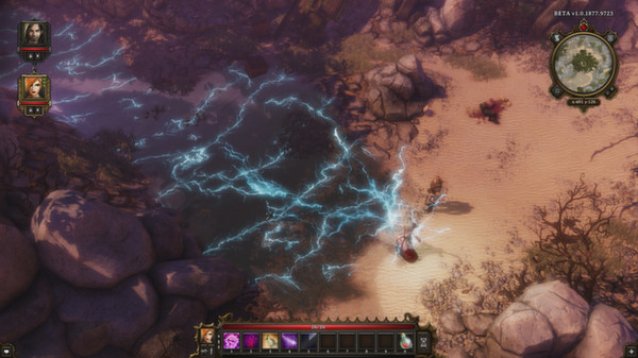
Leaning heavily on old-school inspiration has become quite a thing in the video game industry. Retro aesthetics are huge in today’s gaming landscape, but not so much when it comes to role-playing games. RPGs classics like Ultima, Baldur’s Gate, and Diablo are remembered fondly, but not particularly for their visuals. It’s the engrossing stories and intricate gameplay systems that keep many, like me, longing for the days of old. It’s a rarity to find an RPG that can remain rooted with these nostalgic sensibilities, yet still keep up with today’s ever-rising standards. However, this is exactly what Larian Studios is banking on for their success with Divinity: Original Sin.
Although it’s not the most original concept out there, it’s refreshing to see this RPG narrative revolves around a murder mystery. Players assume the role of Source Hunters, an order of warriors tasked with tracking down the evil “Sourcerers”. They were once the great healers of the land, but have now betrayed the world of Rivellon ever since the Source was somehow tainted. It is suspected their foul magic is responsible for the death of Councillor Jake, a renowned leader in the city of Cyseal, and it’s up to us to solve the case.
The story definitely takes a back seat to the gameplay, but it provides good reason for players to interact with NPCs. There is a point, somewhat early on, when the whole thing takes an odd twist. But despite that quick changeup the overall story manages to hold itself together, albeit in a very strange way. The real problem I have is with the way it’s presented.
Interesting character and NPC dialogue is essential for moving along plot points in a game like this. Unfortunately for us, the majority of NPC dialogue is an absolute bore. It’s wordy, repetitive, runs on tangents, and is just not written very well. More often than not I’ll click through just to get my quest journal updated. It’s a shame; because I’m usually a glutton for reading text in RPGs. Having a large variety of personalities can make a game world really feel alive, but unfortunately there isn’t much of that here.
It’s not all bad though. The most interesting social exchanges come in the form of something called “cooperative dialog”. This occurs when a companion in your party throws their two-cents into a conversation. They may agree, or disagree, with the particular way you’ve influenced a discussion, and in turn this will help to determine your heroes character traits. These traits can grant special bonus abilities, increase attack and critical chance ratings, or even provide immunities to certain status effects.
If two characters can’t agree, there is even a whimsical mini-game of rock-paper-scissors to decide how the debate will finally play out. On the surface it’s a bit goofy, but it ends up being a great system that can sometimes throw a fun wrench in your plans. I’ve had a few unexpected battles because a companion couldn’t control his blood lust against friendly NPCs. I’ve also had to take a few things I probably shouldn’t have to satisfy his greed. However, these outcomes really depend on the AI personality you’ve selected during character creation.
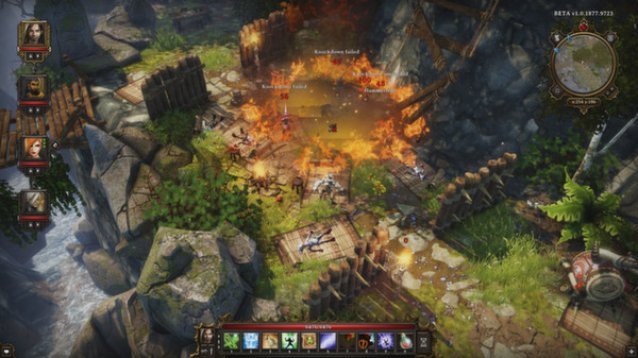
There are eleven preset character builds in total, but that doesn’t mean you can’t do what you what. You can start from scratch on any build and tweak every facet ‘til your hearts content. Want to invest points in a plethora of magic skills, max your strength attribute, and wield two-handed weapons? You can do that. You might have pretty weak spells if you don’t balance it with intelligence, but the choice is yours. Once you’ve created your two main characters, you’re off on a beach and ready for adventure.
Luckily the city of Cyseal isn’t too far ahead, and the short trek will serve as an introduction to a few fundamentals. It’s hard to consider this area a tutorial, because there really isn’t one. But don’t mistake this as a bad thing. Divinity: Original Sin makes no promise to hold your hand, and it becomes all too clear the further along you get. But for those of us who are feeling nostalgic, and/or want to learn something about the game, it might be best to actually read the manual. And yes, there is a manual. That being said, its lack of direction in certain areas can be some of the most frustrating aspects of the game. Thankfully combat isn’t one of them.
Combat is easily the most enjoyable thing about this game. It’s a good thing too, because without a fun and interesting combat system a game like this won’t last very long. The game is played in real-time, but battles are turn-based, and every character uses action points to execute any movement, attack, or spell. They all have a different cost depending on how significant the performed action will be, and using them will take careful consideration.
I’m a big fan of tactical combat; so the more I can feel like a military genius in a game, the better. And with every skirmish in Original Sin I feel like I’m channeling Sun Tzu more and more each time. It’s not just the strategy that makes combat fun, but also the extremely wide margin for error that will keep you on your toes. Mistakes will happen on the battlefield; it’s just a fact. I’ve set my companions ablaze more times than I can count, and I think that’s why they’ve included a specific skill to pat down any “friendly fire”. But it’s these mistakes that can allow for a quick change of tactics to work in your favor.
The landscape plays a big role in how you plan an attack, so if you’re tricky enough and have the right pawns at your disposal you can wreak havoc in very interesting ways. Setting traps for a group of unsuspecting enemies can be insanely fun. Just like the first time I chose to split my party in half. I managed to draw a group of opponents out of a wide-open space and into a very crowded choke point in the terrain. My archer shot off an arrow to get their attention while my mage cast a rain spell, soaking the ground where they’d eventually stand. Meanwhile, my rogue and fighter made their way down a path to the left, eventually turning back into their camp to flank their position. The enemies charged my first group directly, completely unaware that the second was sneaking behind to pin them in. It was like those movie scenes when the commander needs to provide a few seconds of tension.
“Hold…”
“Hold…”
“FIRE!”
Except the plan always works in the movies. Luckily I managed to get five of my six victims to position themselves perfectly. However, one temporarily disabled my archer with a knockdown arrow. It was bad, but I wasn’t panicking yet. My archer was supposed to summon a giant spider to keep my opponents at bay, but when this didn’t happen I was forced to change tactics.
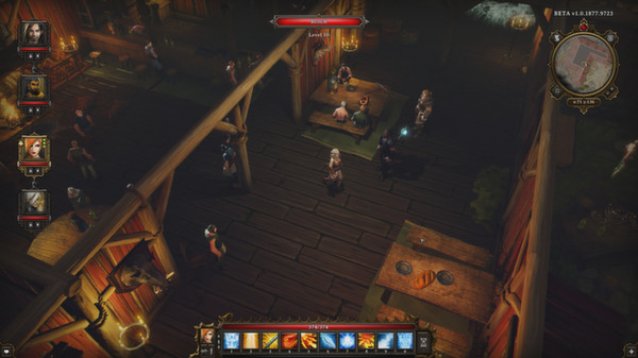
My original intention was to get them standing in water, have my mage do a little shock-and-awe action, backstab the hapless fools with my rogue, and deal massive two-handed damage with my fighter. Long-story short; I did it. But my fighter died early on trying to rescue my archer, so my rogue basically had to go Rambo. It was actually pretty amazing, but definitely not how I envisioned it. The action can get incredibly unpredictable, and it’s moments like these that make me glad I pushed through the doldrums of the starting city.
Combat is the entire reason I gave up speaking to NPCs. It felt like a chore. Not to mention it was a huge let down for the sake of immersion, and some of their design choices didn’t help with it either. For some reason, sneaking turns your character into a bush, boulder, or a barrel, depending on your surroundings. Female player characters also wear odd-looking high heels instead of normal boots, which is disappointing for numerous reasons. It’s pretty obvious some things should be taken with a grain of salt, but for my taste it’s just a bit ridiculous.
The inventory management was another big let down. It’s takes inspiration from the archaic systems we were accustomed to in the old days, but makes absolutely no attempt to improve upon them. The categories and sorting options are a mess because they’re too generalized and unintuitive. They’ve included backpacks to help manage the clutter, but it only makes crafting more bothersome than they’ve surely intended.

Crafting is based on the method of trial and error, so creating an item requires you to drag and drop one onto another and hope it’s a success. It’s easy to lose track of items when working between different categories because they change locations, so any unsuccessful combination will leave you sorting through more menus. Specifically working from backpack to inventory may also cause a strange bug to occur. An unsuccessful attempt has a chance to cause the swapped item to become invisible when it lands back in your inventory. And things only get worse when you involve multiple windows and multiple backpacks. Needless to say, it’s buggy, messy, and just plain annoying.
Despite all of this, crafting can be somewhat useful once you’ve gained enough knowledge. Recipes can be found in books throughout the world, but some are incredibly vague and leave it to the means of experimentation. I absolutely love the idea behind it, and I’m sure some players will accept the challenge as well. However, I think the concept will be lost on 99% of the people who play this game. Collecting these recipes can take a decent amount of time and becomes a waste if you spend points to level your crafting ability right away. My guess is the vast majority will use the sacred power of Google to find them instead.
What makes this so bad is that it will negate the purpose of using trial and error for crafting in the first place. People these days aren’t that patient, and without a good reason to invest in the realism aspect, it just becomes another poor design choice for a game lacking other immersive qualities. It’s many decisions like these that keep Divinity: Original Sin from being a truly great game, and more along the lines of an average one. Even things like balancing issues with blacksmithing, skills and abilities, and food items that provide no significant bonuses, only show off the incredible lack of polish.
However, it’s by no means a terrible game. There’s a ridiculous amount of fun to be had with combat alone if you can look past these issues. There’s even a co-op mode that will add some re-playability. Nonetheless, Larian Studios had plenty of ambition with this game, but just couldn’t live up to the hype.
6 out of 10
Divinity: Original Sin was developed in-house and published by Larian Studios. It was released on June 30th, 2014, and is available on PC and Mac for $39.99. A PC version of the game was provided by the publisher for this review.
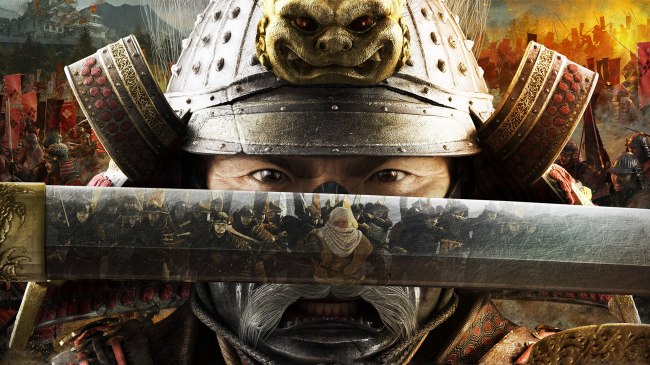

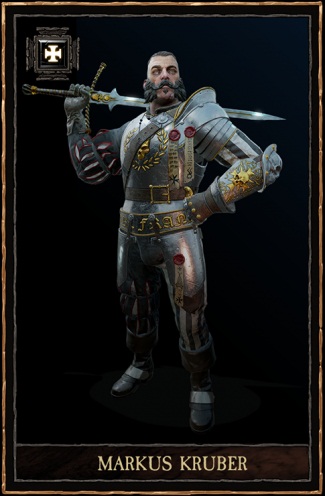
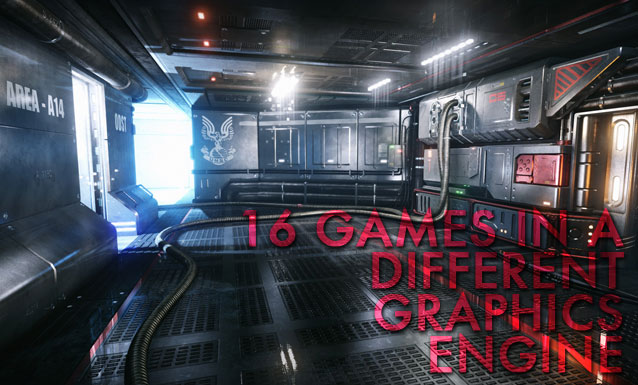
 6 Games To Be Excited About At E3 2014
6 Games To Be Excited About At E3 2014 Call of Duty: Ghosts Wiki : Everything you need to know about the game .
Call of Duty: Ghosts Wiki : Everything you need to know about the game .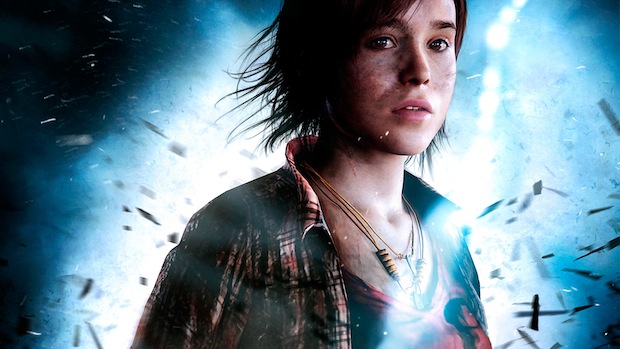 Beyond: Two Souls Review
Beyond: Two Souls Review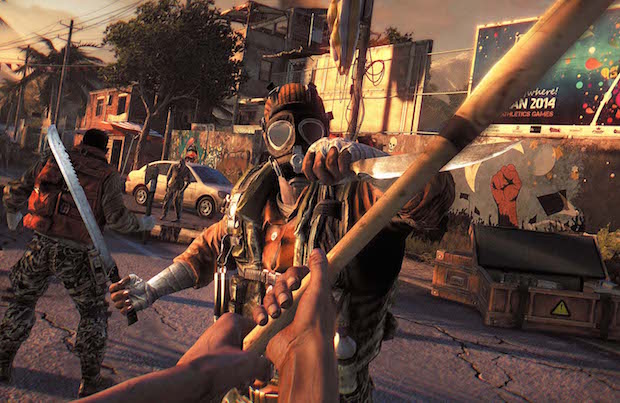 Dying Light Guide: Farming Nighttime Zombies for Fast Money and XP
Dying Light Guide: Farming Nighttime Zombies for Fast Money and XP 7 Digital Scrapbooking Tools for a Mess-Free Hobby
7 Digital Scrapbooking Tools for a Mess-Free Hobby